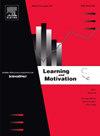Impact of observational modeling on quiet eye duration and free-throw performance in basketball
IF 1.7
4区 心理学
Q3 PSYCHOLOGY, BIOLOGICAL
引用次数: 0
Abstract
Modeling of observation-based training offers a way for beginners to get ready to learn new abilities and handle challenging tasks. However, neither the composed effects of these techniques nor their underlying mechanisms have been studied. Therefore, the current study investigated the effect of expert and novice observational modeling and gaze behavior on free-throw basketball performance in novices and analyzed the mechanisms that facilitate learning with a quiet eye. Forty-eight novice student (age = 26.37 ± 3.12 years, height = 175.62 ± 7.40 cm) participants contributed to this research. They were arbitrarily divided into four groups: expert model with gaze guidance (EGG), expert model without gaze guidance (EWGG), novice model with gaze guidance (NGG), and novice model without gaze guidance (NWGG). Pre- and post-tests (acquisition and retention) were conducted to assess the participants' quiet eye and the performance of basketball free-throw skills. The participants underwent five consecutive days of observational learning with and without gaze guidance, followed by physical training. All throws were done with the dominant hand (right). Results indicated performance improvement effects of EGG & NGG models with longer eye quiet duration accompanying it than EWGG & NWGG models (P ≤ 0.05). Furthermore, in line with our prediction, long eye-quiet duration is linked with improved performance in motor learning tasks. It also facilitates the process of learning motor skills. The findings suggest the efficiency and effectiveness of the gaze behavior method and its positive impact on motor skills' observational learning modeling method.
观察建模对篮球静眼持续时间和罚球表现的影响
基于观察的建模训练为初学者提供了一种准备学习新技能和处理具有挑战性任务的方法。然而,这些技术的综合效果及其潜在机制都没有得到研究。因此,本研究考察了专家和新手观察建模和注视行为对新手罚球成绩的影响,并分析了静眼促进学习的机制。48名新生(年龄= 26.37 ± 3.12岁,身高= 175.62 ± 7.40 cm)参与了本研究。他们被随机分为四组:有凝视引导的专家模型(EGG)、没有凝视引导的专家模型(EWGG)、有凝视引导的新手模型(NGG)和没有凝视引导的新手模型(NWGG)。通过前测和后测(习得和保留)来评估参与者的静眼和篮球罚球技术的表现。参与者在有或没有注视指导的情况下进行了连续五天的观察学习,随后进行了体能训练。所有的投掷都是用惯用手(右手)完成的。结果表明,蛋清有改善性能的效果;与EWGG相比,NGG型号的眼睛安静时间更长;NWGG模型(P ≤ 0.05)。此外,与我们的预测一致,长时间的眼静时间与运动学习任务的表现改善有关。它还有助于学习运动技能的过程。研究结果提示注视行为方法的有效性和有效性,以及注视行为对运动技能观察学习建模方法的正向影响。
本文章由计算机程序翻译,如有差异,请以英文原文为准。
求助全文
约1分钟内获得全文
求助全文
来源期刊

Learning and Motivation
Multiple-
CiteScore
2.90
自引率
0.00%
发文量
53
期刊介绍:
Learning and Motivation features original experimental research devoted to the analysis of basic phenomena and mechanisms of learning, memory, and motivation. These studies, involving either animal or human subjects, examine behavioral, biological, and evolutionary influences on the learning and motivation processes, and often report on an integrated series of experiments that advance knowledge in this field. Theoretical papers and shorter reports are also considered.
 求助内容:
求助内容: 应助结果提醒方式:
应助结果提醒方式:


